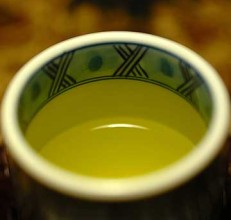Green Tea
Green tea has become increasingly popular in recent years, largely due to its claimed cancer-preventative properties.
Green, Black and Oolong teas are all derived from the Camellia sinensis plant found in China. These differ with regards to how the leaves are plucked and prepared.
Green tea, unlike these close relations, is unfermented, leaving its active constituents unaltered.
The Camellia sinensis plant has been cultivated for 4000 years in China and its hairy leaves have been used in social and medicinal beverages for all this time. Green tea has been, and is still recommended for the relief of headaches, body aches and pains, digestion, depression, as well as an immune enhancer, detoxifier and energizer.
Parts of the plant that are used
The leaf bud and two adjacent young leaves together with the stem, broken between the second and the third leaf, are used for tea. Older leaves are considered inferior in quality.
Benefits of green tea
- Prevention of Cancer
- Gingivitis
- High cholesterol
- Hypertension
- Immune boosting
- General infection
How does green tea work?
Green tea is very high in polyphenols which has potent antioxidant and anticancer properties and this constituent is believed to be responsible for most of the tea’s healing properties. It is believed polyphenols prevent cancer by blocking the formation of cancer-causing compounds such as nitrosamines, suppressing the activation of carcinogens, and detoxifying or trapping cancer-causing agents.
Green tea is believed to have the greatest effect on cancers of the gastrointestinal tract such as stomach, small intestine, pancreas, and colon, as well as lung cancer and oestrogen-related cancers including most breast cancers. According to one study in the Journal of the National Cancer Institute, Green tea reduces the risk of oesophageal cancer in Chinese men and women by nearly sixty percent.

Polyphenols have shown to stimulate the production of several immune system cells too, and possess antibacterial properties – even against the bacteria that cause dental plaque. They are also considered to be more potent antioxidants than vitamin E and vitamin C. The tea also contains volatile oils, vitamins, minerals, and caffeine.
According to scientific research, green tea guards against cardiovascular disease by lowering total cholesterol levels and improving cholesterol profiles. It has also been effective in inhibiting the abnormal formation of blood clots, which can result in thrombosis, a primary cause of heart attacks and stroke.
New scientific evidence also suggest that green tea may help fight glaucoma and other eye diseases.
How much should you drink?
Steep one teaspoon of green tea leaves (or a tea bag) in one cup of boiling water for three minutes and drink three cups a day. Most of the research done to date on Green tea is based on the consumption of three cups per day, which provides 240-320 mg of polyphenols.
How safe is it?
Green tea is considered very safe. However some side effects from drinking large quantities include insomnia, anxiety, and other symptoms typically associated with caffeine consumption.
(Health24, updated by Birgit Ottermann, February 2010)




 Publications
Publications
 Partners
Partners













